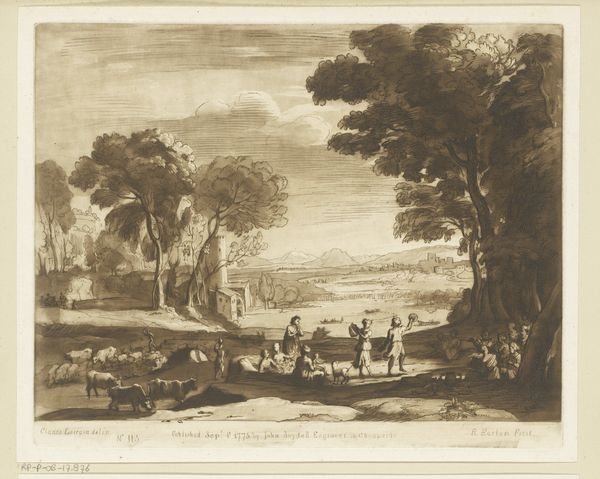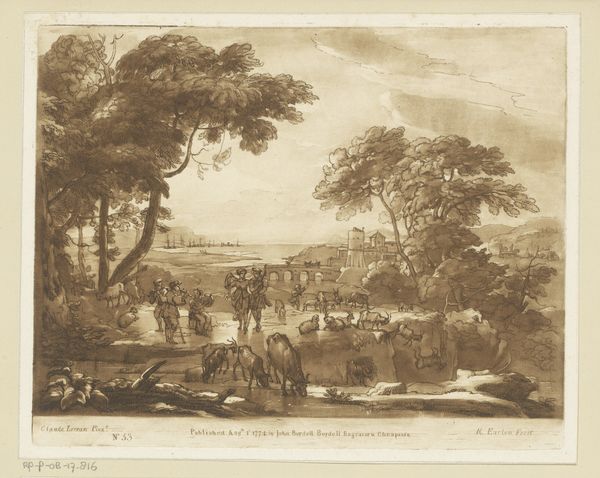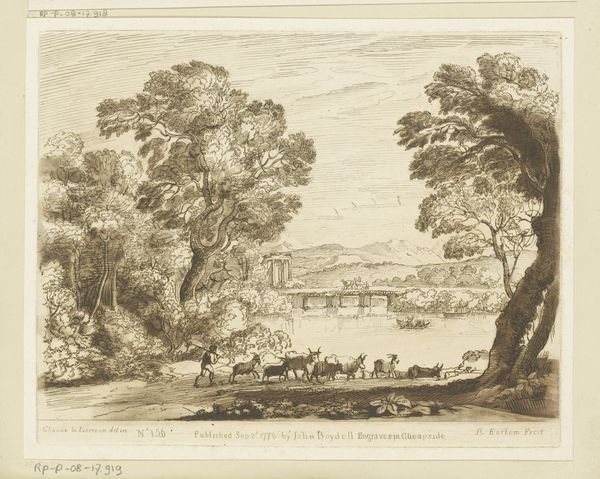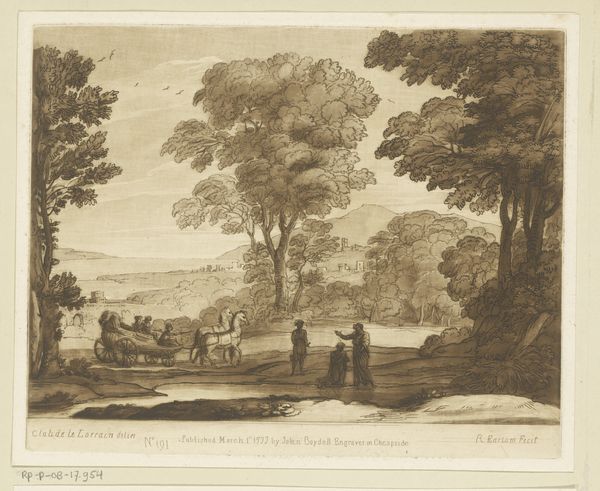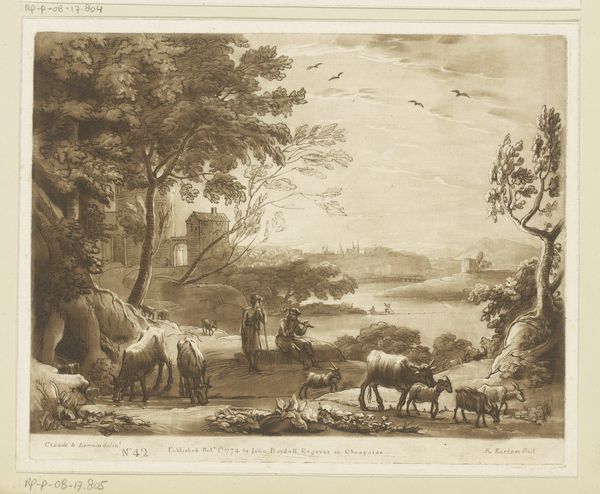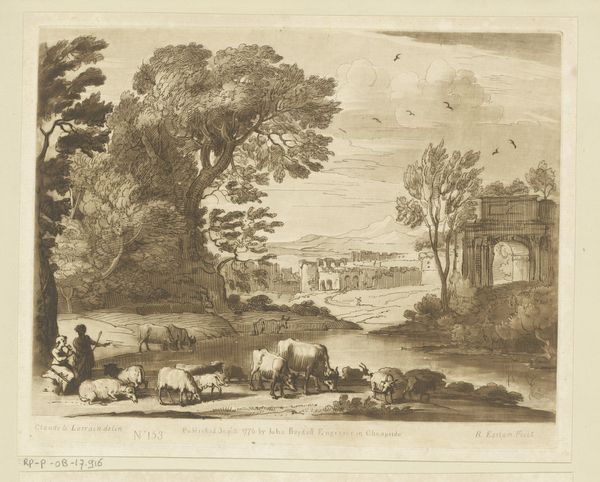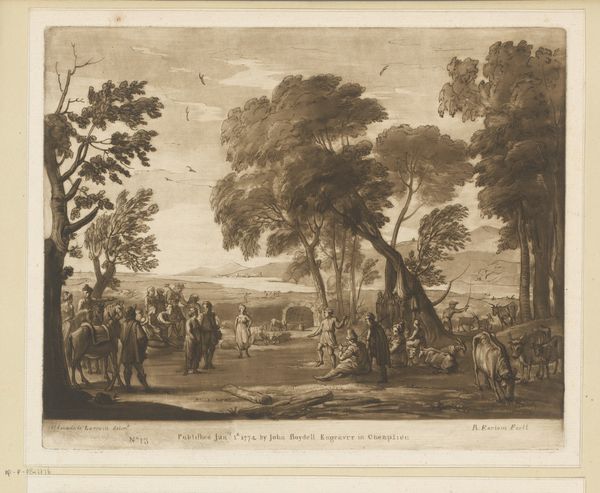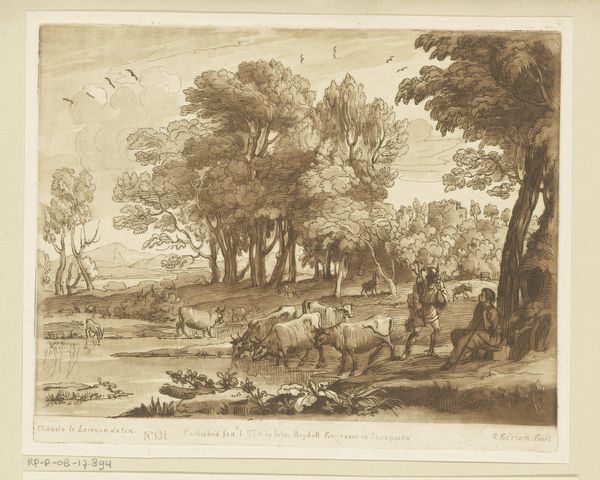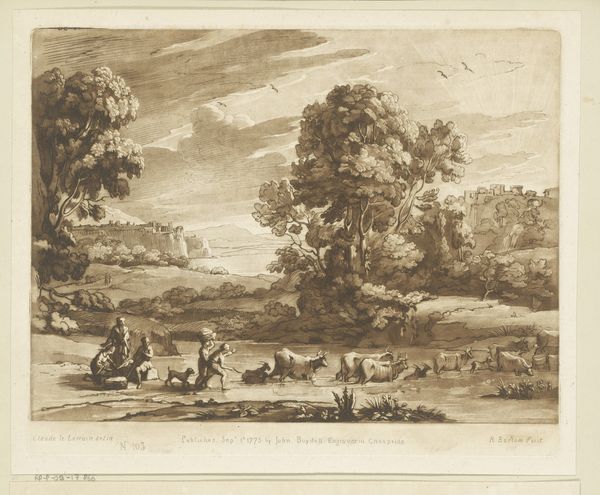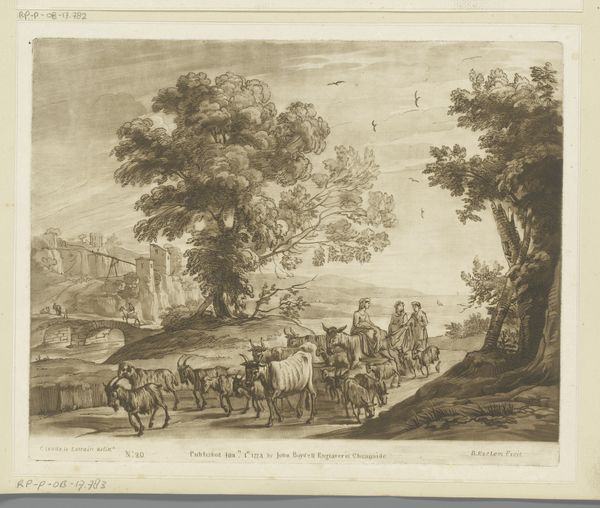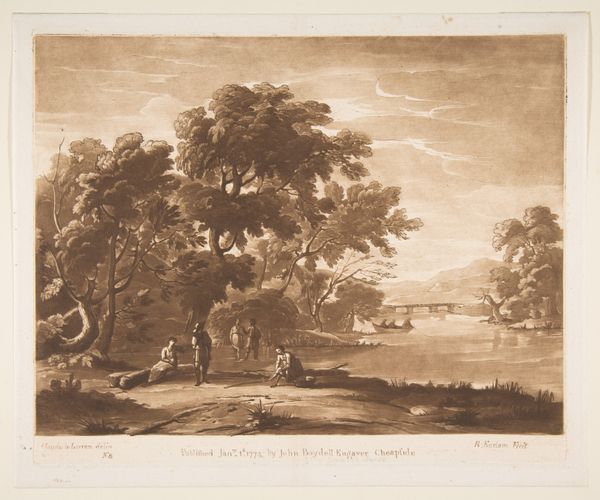
Landschap met vee en drie pratende herders aan een rivieroever Possibly 1774
0:00
0:00
Dimensions: height 207 mm, width 257 mm
Copyright: Rijks Museum: Open Domain
Editor: Here we have "Landschap met vee en drie pratende herders aan een rivieroever," possibly from 1774, by Richard Earlom. It's an engraving, and I’m struck by the detail in the landscape, almost photorealistic. How should we interpret such a clear image? Curator: The key is in its production. This isn’t simply about *representing* a landscape, it's about *manufacturing* an image for consumption. Look at the labour involved in creating this engraving. Editor: Yes, I see the lines, very precise... but what does that say about the landscape itself? Curator: The print was made during a period when there was increased enclosure in the English countryside. Engravings like this were commercial products, consumed by the rising middle class. They presented an idealized vision of rural life that papered over the socio-economic upheavals of the time. Note how labour is romanticized; do you see the relationship between humans and animals in the field? What social messages were created in Earlom’s time, during the Industrial Revolution? Editor: So, the picturesque scene obscures the actual realities of rural labour and land ownership? I hadn't considered the print as a commodity. Curator: Precisely! Consider the means of production and reproduction and who would have purchased this print, for what reasons? What function did this pastoral fantasy serve? Editor: I see now! Looking at the material reality – the engraving process, the social context – adds so much to understanding the image itself. Thank you! Curator: Indeed, recognizing the materiality redirects our attention, shifting our interest to who consumes images and their symbolic representation of power.
Comments
No comments
Be the first to comment and join the conversation on the ultimate creative platform.
